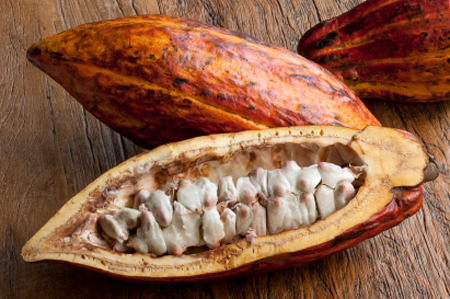Cocoa, Once Hot, Is Facing a Chill
Category: Cocoa
 (Wall Street Journal) – As consumers around the world tighten their belts, even cocoa is getting squeezed.
(Wall Street Journal) – As consumers around the world tighten their belts, even cocoa is getting squeezed.
Prospects for slowing growth in both developed and emerging markets are pushing down cocoa prices, the main ingredient in chocolate and one of the better-performing commodities last year. Demand from developing countries such as India and China had helped boost cocoa prices to 3½-year highs in 2014.
But cocoa futures ended at a one-year low on Wednesday, down 6.7% since the start of the year. Investors expect the declines to continue as demand falls from North America to Europe to Asia. Processors in those regions ground nearly 590,000 metric tons of cocoa beans into products, including cocoa butter and powder, during the fourth quarter of 2014, the lowest quarterly total in more than two years, according to trade groups’ data. Grindings are considered a barometer of cocoa demand.
Demand is slumping because economic prospects have dimmed in many emerging markets, where expanding middle classes had fueled much of the growth in global chocolate consumption in recent years. In developed countries, sales fell following price increases last year by major candy companies, including Hershey Co. and Mars Inc., which were responding to higher raw-material costs for ingredients including cocoa.
As a result, the $5.2 billion cocoa market is succumbing to the weakening global outlook months after prices for raw materials such as oil and iron ore began to tumble.
“It just seems as though a lot of the excitement about the global economy booming and demand for luxury items like cocoa seems to have worn off,” said James Cordier, president of Liberty Trading Group, a Tampa, Fla.-based brokerage. “When the global economies are slowing, we have to shave some expectations.”
Mr. Cordier expects cocoa futures to remain below $3,000 a ton for the first half of 2015. Cocoa for March delivery on ICE Futures U.S., the most-active contract, ended Wednesday at $2,715 a ton, the lowest since Jan. 22, 2014.
Earlier this month, the International Monetary Fund cut its global growth forecasts for 2015 and 2016 by 0.3 percentage point to 3.5% and 3.7% respectively, citing slower expansion in China.
Cocoa futures had soared to just shy of $3,400 a ton in September, boosted by strong demand in emerging markets and fears that the Ebola outbreak could choke off the flow of beans from farms to ports in West Africa, where 70% of the world’s cocoa is grown. But when those fears failed to materialize and the crop in Ivory Coast, the world’s top-grower, came in at a record at the end of the season in September, cocoa’s price began to fall.
Prices extended those losses after the Cocoa Association of Asia said Friday that grindings in the fourth quarter fell 17% from a year earlier. That followed declines in European and North American grindings that were reported earlier. Between the three regions, grindings were down 8.9% from a year earlier.
Grindings in Europe, North America and Asia “were worse than expectations and not immaterially,” said Gillian Rutherford, portfolio manager at Pacific Investment Management Co. who oversees $20 billion across several commodity portfolios. Pimco is currently underweight on cocoa, meaning it owns fewer positions in that market than its benchmarks recommend, she said.
“It’s unlikely that you’re going to see a very positive or sharp rebound in any one given quarter, and margins still really don’t look that great” for processors that grind the beans into cocoa powder and butter, Ms. Rutherford said.
Cocoa futures are also facing pressure due to plunging prices for cocoa butter, the substance that gives chocolate its creamy texture. Cocoa butter had been a bright spot for processors even as the cost of cocoa powder was falling. But cocoa-butter prices are down 29% since hitting a six-year high in August, according to Thomson Reuters data, a result of weaker chocolate demand.
To be sure, some traders and investors are betting that any adverse weather in West Africa could hurt production and send prices higher.
“People aren’t taking into consideration the weather as much as they should,” said Hector Galvan, senior market strategist at RJO Futures in Chicago. If dry weather hurts yields in West Africa, he said prices could easily jump back above $3,100 a ton.
But processors are unlikely to ramp up production unless butter or powder prices show signs of recovering, said Kip Walk, head of sustainability at Blommer Chocolate Co., a top North American cocoa processor and supplier to major candy companies including Hershey.
“If that price or value [for butter] starts to decrease, you have to hope the price for powder increases in a comparable way, but what happened is that the powder market has not necessarily improved,” Mr. Walk said. “If you’re a converter of beans, if you don’t have demand for butter, you’re not going to want to run those presses.”
As a result, some market participants are now forecasting a surplus of the beans during the season that began Oct. 1. Cocoa processor Transmar Group projects that supplies could outstrip demand by as much as 150,000 metric tons.

